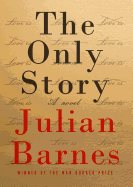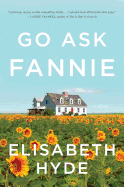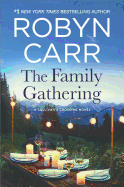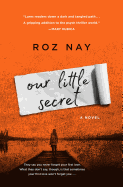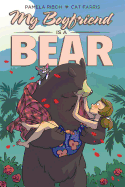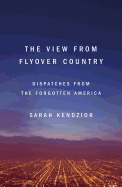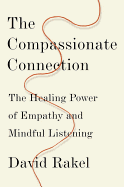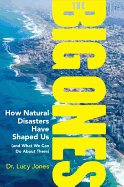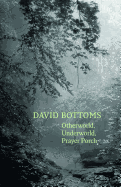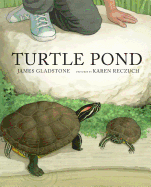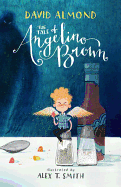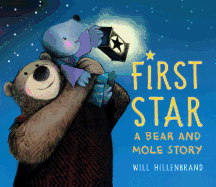In the early days of Mother's Day, people would celebrate their moms by attending church and writing letters. Everyone loves a good handwritten note, but why not celebrate Mom with books for the very people who make Mom Mom? The titles below all feature child and teen protagonists who have special relationships with their patient, grateful, fashionable, magical and riot grrrl mothers--and grandmothers, too!
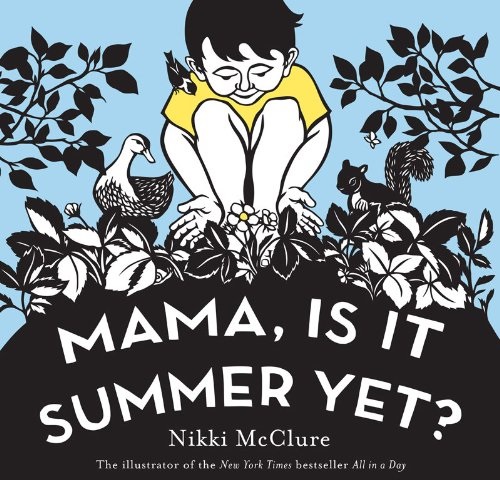 Mama, Is It Summer Yet by Nikki McClure (Abrams Appleseed, $8.99, board book, 30p., ages 0-3)
Mama, Is It Summer Yet by Nikki McClure (Abrams Appleseed, $8.99, board book, 30p., ages 0-3)
In a lyrical ode to the sweet anticipation of a new season, the board book version of Nikki McClure's Mama, Is It Summer Yet? will captivate readers young and old. Striking cut-paper artwork balances beautifully with McClure's gentle, almost old-fashioned text. As winter gives way to spring and beyond, the boy and his mother clear the garden space, plant seeds, build a windsock and wait for the fruits of their labor. Eventually, the two enjoy books on a blanket under the now blossoming tree. Throughout, the boy's refrain returns: "Mama, is it summer yet?" Again and again, his patient mother responds with "Not yet, my little one. But..." until, inevitably, the answer turns to a joyful yes.
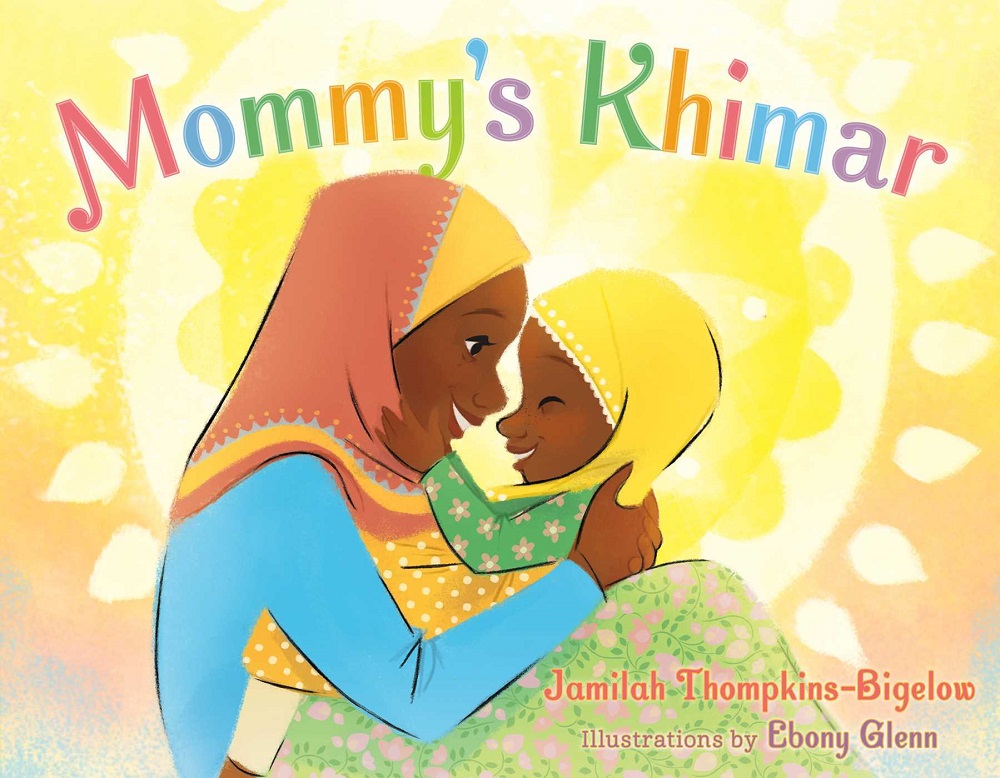 Mommy's Khimar by Jamilah Thompkins-Bigelow, illus. by Ebony Glenn (Salaam Reads, $17.99 hardcover, 40p., ages 4-8)
Mommy's Khimar by Jamilah Thompkins-Bigelow, illus. by Ebony Glenn (Salaam Reads, $17.99 hardcover, 40p., ages 4-8)
The young Muslim narrator of Jamilah Thompkins-Bigelow's debut picture book luxuriates in all the wonder of her mother's headscarves. She delights in the bright, beautiful colors and styles, she uncovers a sense of empowerment while wearing them and she eagerly embraces a special connection with her mother: "I close my eyes and if I breathe in deeply--really deeply--I smell the coconut oil in Mommy's hair and the cocoa butter on her skin." The little girl's love for her mother's khimar and all it represents is reinforced by the acceptance of family and friends from a dazzling array of ethnicities and religious backgrounds. Her grandmother, who doesn't wear a khimar or "go to the mosque like Mommy and Daddy," sees the little girl in her mother's bright yellow hijab and calls her "Sunshine," singing out a gleeful "Sweet Jesus!" The delightful prose and whimsical illustrations reflect a culture of diversity and acceptance.
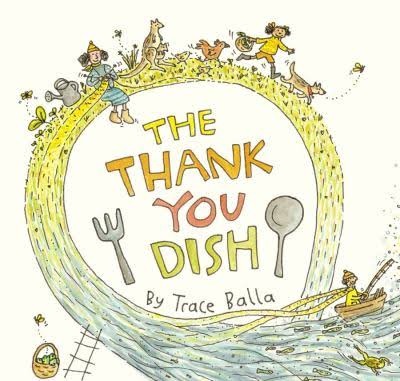 The Thank You Dish by Trace Balla (Kane Miller, $9.99 hardcover, 24p., ages 3-8)
The Thank You Dish by Trace Balla (Kane Miller, $9.99 hardcover, 24p., ages 3-8)
It's dinnertime at Grace's place. "Thanks," says her mother, "to the rain, the soil and the sunshine." Grace is as thankful as Mama: "And thank you, kangaroos," she replies, pleased that the kangaroos didn't eat the carrots she's currently enjoying. Grace doesn't stop there. Leo gave her a ladder so she could pick lemons from Lily's tree; an alpaca gave its wool which was knitted into a scarf Uncle Fred wore when catching the fish; and the road workers fixed the path Mama and Grace used to bike to the produce stand. "I never knew there were so many thanks to give for just one dinner!" Mama exclaims, pleased with her grateful daughter, "Thanks for saying thanks!" Balla's sweet illustrations depict Grace's stories as The Thank You Dish shines a light on all the beautiful things that come together to create the ordinary.
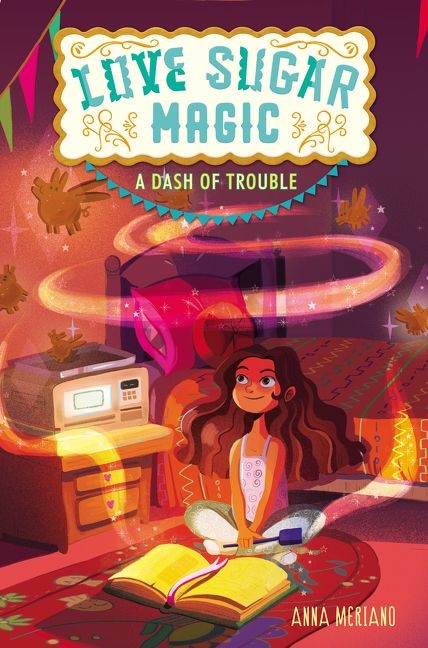 Love Sugar Magic: A Dash of Trouble by Anna Meriano, illus. by Mirelle Ortega (Walden Pond Press/HarperCollins, $16.99, hardcover, 320p., ages 8-12)
Love Sugar Magic: A Dash of Trouble by Anna Meriano, illus. by Mirelle Ortega (Walden Pond Press/HarperCollins, $16.99, hardcover, 320p., ages 8-12)
Eleven-year-old Leo Logroño has spent her life trying to catch up to her four older sisters. Her family's Amor y Azúcar Panadería (Love and Sugar Bakery) has hosted the local Día de los Muertos festival "for as long as there had been a Rose Hill, Texas, to celebrate it," but, much to Leo's chagrin, she will once again be left out of prepping for the festivities. Determined to uncover the secrets and not be left out any longer, Leo goes snooping and discovers that the women in her family are all brujas (witches). Their magic "comes from the magic of sweetness; sweetness from love and sweetness from sugar" and training begins when a Logroño girl turns 15. First in a promising new series, A Dash of Trouble by Anna Meriano is refreshingly fantastical, marrying the realistic lives of Leo's Texan, Mexican-American family with matrilineal "love and sweetness"-based witchcraft.
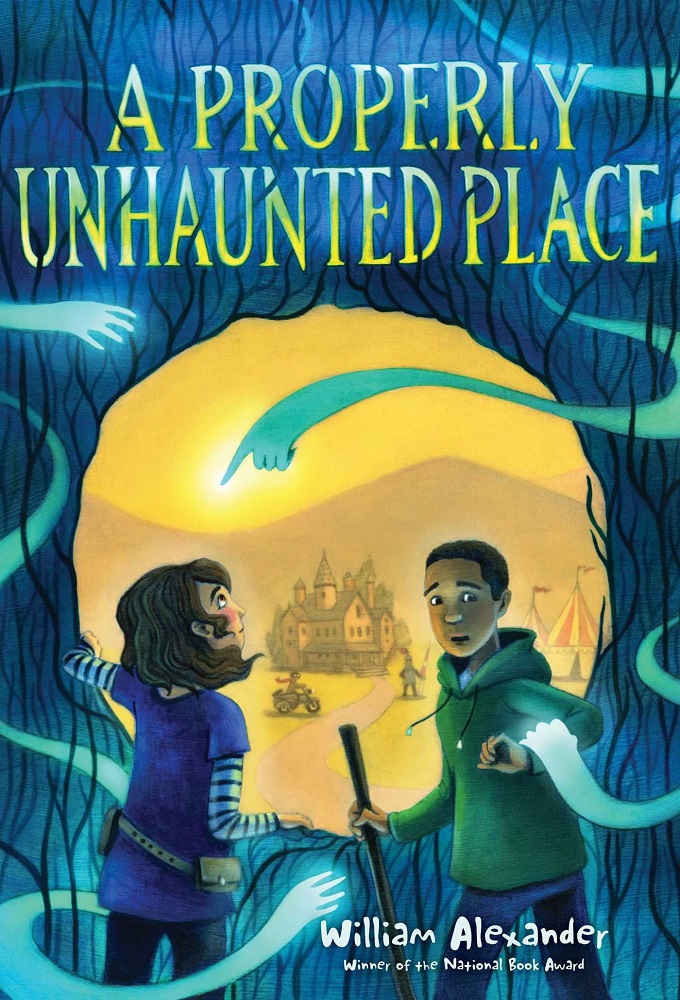 A Properly Unhaunted Place by William Alexander, illus. by Kelly Murphy (Margaret K. McElderry/S&S, $16.99, hardcover, 192p., ages 8-12)
A Properly Unhaunted Place by William Alexander, illus. by Kelly Murphy (Margaret K. McElderry/S&S, $16.99, hardcover, 192p., ages 8-12)
Rosa Ramona Diaz is not impressed when she and her mother move from the city to a basement apartment underneath the Ingot Public Library. Rosa's mom is the new library appeasement specialist: her job is to calm ghosts who get upset and keep the really nasty ones distracted. But there are no ghosts in Ingot. In fact, it's "the only unhaunted place that Rosa had ever heard of." When Rosa goes out to explore, a beast charges out of the forest and she springs into action--ghost-free Ingot has just had a haunting. Though primarily about ghosts, A Properly Unhaunted Place is also about respect; Rosa's mom doesn't hunt spirits or banish them. Rather, she appeases them using the powers of listening and speaking their language. Kelly Murphy's illustrations help bring life to William Alexander's succinct gem.
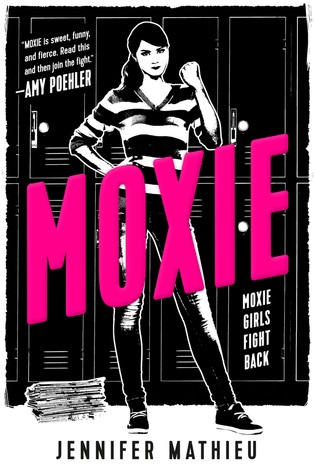 Moxie by Jennifer Mathieu (Roaring Brook Press, $17.99, hardcover, 336p., ages 13-up)
Moxie by Jennifer Mathieu (Roaring Brook Press, $17.99, hardcover, 336p., ages 13-up)
Vivian's mother was a determined Riot Grrrl who stuck out and acted out in her high school football-obsessed Texas town. A junior at the same school her mother attended, Viv's high school experience is similar to that of her mother's. But Viv, unlike her mother, generally keeps her head down and avoids making waves. Then, football star and all-around jerk Mitchell Wilson starts picking on the new girl: Lucy is mid-answer in English class when Mitchell "coughs": "Make me a sandwich." Getting the idea from her mother's Riot Grrrl days, Viv creates Moxie, a feminist zine, and passes it out anonymously. As the egregious acts of misogyny continue, the girls in the school begin to band together and Moxie becomes a movement. Viv's mother couldn't be prouder. --Siân Gaetano, children's and YA editor, Shelf Awareness
Check Out These Fantastic Moms for Mother's Day
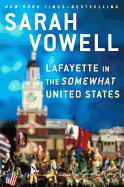 Do you ever find yourself interrupting your reading to tell someone, anyone, a new and interesting fact you've just learned? "Did you know Lafayette was only 19 when he was made a general in the American Revolution?" (Me while reading Sarah Vowell's Lafayette in the Somewhat United States [Riverhead, $16].) "Did you know what actually happens to your body if you donate it to science?" (Me while reading Mary Roach's Stiff [Norton, $15.99]). These are some of my favorite nonfiction reads--the kind of book that makes you want to shout your new knowledge from the rooftops.
Do you ever find yourself interrupting your reading to tell someone, anyone, a new and interesting fact you've just learned? "Did you know Lafayette was only 19 when he was made a general in the American Revolution?" (Me while reading Sarah Vowell's Lafayette in the Somewhat United States [Riverhead, $16].) "Did you know what actually happens to your body if you donate it to science?" (Me while reading Mary Roach's Stiff [Norton, $15.99]). These are some of my favorite nonfiction reads--the kind of book that makes you want to shout your new knowledge from the rooftops.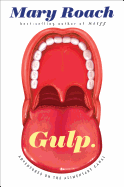 Truly, any of Roach's books would fall into this genre, which I've affectionately dubbed "did you know" nonfiction. In each of her books, she takes a close look at topics most readers will know little about--indeed, topics most readers won't even know they want to know more about until they have started reading. The aforementioned Stiff explores the science of human cadaver research; Gulp (Norton, $15.95) studies the alimentary canal (did you know that's the scientific name for the passage along which food passes through the body?); Spook (Norton, $15.95) covers the science of the afterlife.
Truly, any of Roach's books would fall into this genre, which I've affectionately dubbed "did you know" nonfiction. In each of her books, she takes a close look at topics most readers will know little about--indeed, topics most readers won't even know they want to know more about until they have started reading. The aforementioned Stiff explores the science of human cadaver research; Gulp (Norton, $15.95) studies the alimentary canal (did you know that's the scientific name for the passage along which food passes through the body?); Spook (Norton, $15.95) covers the science of the afterlife. 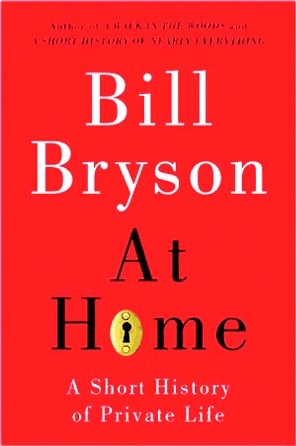 Bill Bryson writes with similar gusto (and humor) about topics large and small. It's impossible to read a book titled A Short History of Nearly Everything (Broadway Books, $18) without picking up at least one new factoid to share with friends. But even more specific books of his, like At Home (Anchor, $17), are packed with fascinating details--this one about the history of the home as we recognize it today. Emily Nagoski turns that same detailed eye to women's sexuality in Come As You Are (Simon & Schuster, $16.99); reading it is sort of like taking a sex-ed class that you actually want to take. And, like so many of these, it is packed with the kind of fascinating details that were likely glossed over in school. --Kerry McHugh, blogger at Entomology of a Bookworm
Bill Bryson writes with similar gusto (and humor) about topics large and small. It's impossible to read a book titled A Short History of Nearly Everything (Broadway Books, $18) without picking up at least one new factoid to share with friends. But even more specific books of his, like At Home (Anchor, $17), are packed with fascinating details--this one about the history of the home as we recognize it today. Emily Nagoski turns that same detailed eye to women's sexuality in Come As You Are (Simon & Schuster, $16.99); reading it is sort of like taking a sex-ed class that you actually want to take. And, like so many of these, it is packed with the kind of fascinating details that were likely glossed over in school. --Kerry McHugh, blogger at Entomology of a Bookworm


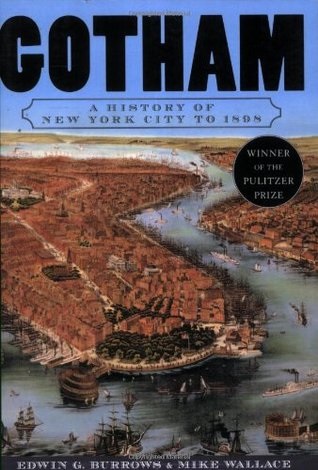 Edwin G. Burrows, a professor at Brooklyn College for 41 years and co-author of Gotham: A History of New York City to 1898, died on May 4 at age 74. He and co-author Mike Wallace shared the 1999 Pulitzer Prize for History. At more than 1,400 pages, Gotham is a monumental work spanning the first Dutch landings, wars with Native Americans, the city under colonial control, its financial role in the slave trade, the Civil War and 1863 Draft Riots, and the constant demographic shifts caused by immigration. Burrows was also the author of Forgotten Patriots: The Untold Story of American Prisoners During the Revolutionary War (2008) and The Finest Building in America: The New York Crystal Palace, 1853-1858 (2018).
Edwin G. Burrows, a professor at Brooklyn College for 41 years and co-author of Gotham: A History of New York City to 1898, died on May 4 at age 74. He and co-author Mike Wallace shared the 1999 Pulitzer Prize for History. At more than 1,400 pages, Gotham is a monumental work spanning the first Dutch landings, wars with Native Americans, the city under colonial control, its financial role in the slave trade, the Civil War and 1863 Draft Riots, and the constant demographic shifts caused by immigration. Burrows was also the author of Forgotten Patriots: The Untold Story of American Prisoners During the Revolutionary War (2008) and The Finest Building in America: The New York Crystal Palace, 1853-1858 (2018).
 Mommy's Khimar by Jamilah Thompkins-Bigelow, illus. by Ebony Glenn (Salaam Reads, $17.99 hardcover, 40p., ages 4-8)
Mommy's Khimar by Jamilah Thompkins-Bigelow, illus. by Ebony Glenn (Salaam Reads, $17.99 hardcover, 40p., ages 4-8) The Thank You Dish by Trace Balla (Kane Miller, $9.99 hardcover, 24p., ages 3-8)
The Thank You Dish by Trace Balla (Kane Miller, $9.99 hardcover, 24p., ages 3-8)
 A Properly Unhaunted Place
A Properly Unhaunted Place
